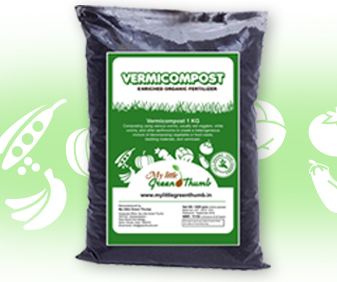
SOME APPLICATIONS FOR PEST CONTROL

Plant to control pests. Plant trap crops. These are plants that pests love, so that pests can be caught or destroyed on these plants. Marigolds are a host to soil nematodes, so planting marigolds with potato, carrots and mooli reduces infection. The French marigold root exudes a substance that kills nematodes. Dill (soha/shepu), carrot and fennel (sauf) host insect predators such as ladybirds and wasps which eat aphids. Plant sacrificial plants which pests prefer and so your crop is saved. Slugs love radish. Plant them amongst your lettuces as a sacrificial plant, or in a bed away from your lettuces. Leaf minors also love radish.
Plant them along with your lettuces. Plant insectivorous plants. Plant aromatic plants such as mint, and geranium, which repel insects by their strong scent.
Marigold repels white fly. Onions repel carrot fly. Cabbages repel aphids and white fly. Garlic deters aphids. Mint deters moths and ants. Coriander repels aphids. The edible flower nasturtium makes a great trap crop for aphids, and its scent deters most pests. It also attracts predatory insects such as lacewings, ladybugs and mantises. Planting a mix of these aromatic plants confuse pests and prevents them from finding their host.
Plant decoys to keep pests away from the vulnerable main crop, most flowers act as decoys. Plant beans near maize, once the maize has grown to some height.
The maize plant provides a stand for the climber and the bean fixes N in the soil. Some plants do better when planted next to another, for instance basil does well near tomatoes.
Bordeaux Mixture:

Dissolve 100 gram of builders’ (hydrated) lime in half a standard (plastic) bucket of water. (About 5 litres).Dissolve 100 grams copper sulphate (available at garden centres) in a separate half bucket of water.Keeping the lime mixture agitated to prevent settling, pour it steadily into the half bucket of dissolved copper sulphate.If necessary add enough extra water to make up a total of 10 litres. This is Bordeaux mixture. It is at its most effective strength when freshly mixed so must be used immediately or within a couple of days.It is sprayed to completely cover the main branches and infected areas. Bordeaux mixture colours the sprayed plants blue. The spray can withstand light rain. However a disadvantage with this mixture is that it tends to quickly settle so must be constantly agitated during spraying operations. The lime content also tends to easily block the fine nozzles of sprayers.
Black Spot Spray/Bicarb Soda Spray

1 tablespoon of bicarbonate soda 4.5 litres of water 1 tablespoon of homemade Oil Spray concentrate (see below) Spray weekly as a preventative treatment to minimise black spot and mildew. Improve air circulation around plants. Avoid wetting the foliage and thin out overcrowded growth. Remove any leaves affected by black spot as soon as they are sighted.
Casuarina Tea Casuarina trees contain high levels of silica. Biodynamic gardeners make a spray made from casuarina foliage for use against fungal diseases like anthracnose and other mildews.
Simmer 60gm dried Casuarina needles in one litre of water for 20 minutes using a stainless steel container. Strain and dilute 1 part concentrate to 40 parts water.Spray in the air around trees early in the morning.
Garlic Spray

Three large cloves of crushed garlic 1 tablespoon of vegetable oil One teaspoon of liquid soap One litre of water Combine the garlic and vegetable oil and leave to soak overnight. Strain and add to the litre of water along with the liquid soap. Spray regularly.
Garlic is known for its antibacterial properties, but it is its insect repellent qualities that most gardeners admire.
Powdery Mildew Spray/Milk Spray

Powdery mildew appears as grey or white powdery spots on the new foliage. It causes puckering of the foliage and in severe infestations, a burnt appearance and leaf fall. This disease occurs most frequently when night temperatures drop and relative humidity remains high. Avoid the over-use of high nitrogen fertilisers as these can tend to make leaf growth that is soft and more susceptible to disease.
1 part of milk 9 parts of water. Spray regularly over the leaves, paying particular attention to soft new growth.
Homemade Oil Spray as a general insecticide

Mix 500ml of vegetable oil or better still neem oil (available at a chemist) ½ cup of dishwashing liquid or other liquid soap .Blend thoroughly and seal in a clean, clearly labelled jar. Store in a cool area for later use. Dilute one tablespoon of the concentrate into one litre of water before spraying.
Oil based mixtures can be used to suffocate mites, scale and other soft bodied insects. They help to repel leaf miner moths and some gardeners even find them effective against grasshoppers. Avoid using on plants with hairy leaves and during very hot weather.
Burnt Jaggery Spray

To burn jaggery you have to cook jaggery in a frying pan with water until all the water evaporates and the sugar blackens. Dissolve one tablespoon of burnt jaggery into a litre of warm water. Add one teaspoon of dish washing liquid or other liquid soap Spray regularly over the leaves of all plants attacked by caterpillars and other chewing pests.
Caterpillars would rather starve than eat leaves sprayed with this mixture. It has also been used with success by some gardeners for the treatment of soil affected by root knot nematodes by doubling the concentration of burnt jaggery.

